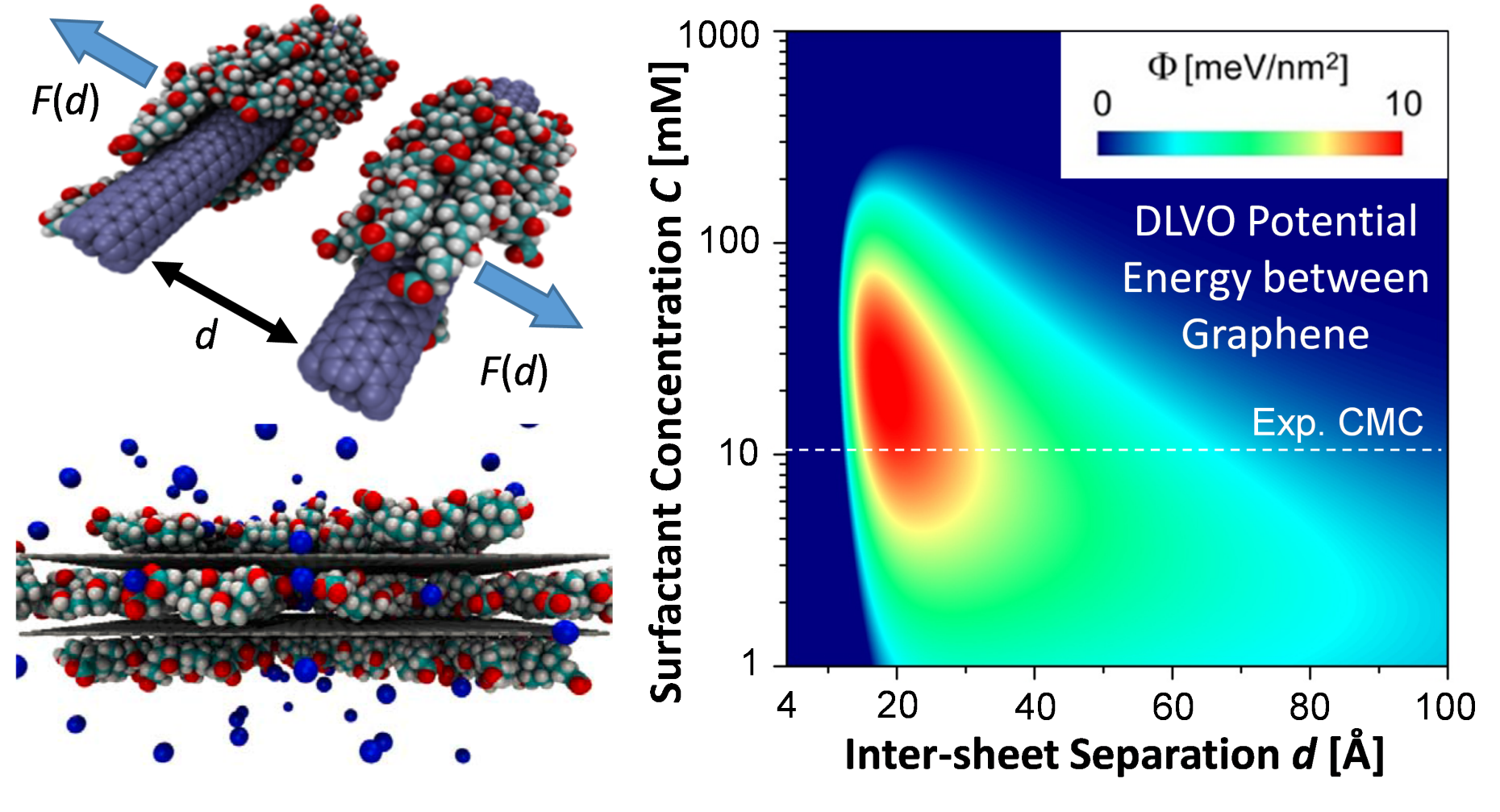[Adv. Colloid Interface Sci.] Understanding the colloidal dispersion stability of 1D and 2D materials: Perspectives from molecular simulations and theoretical modeling
Invited review article as a Historical Perspective in a Special Issue honoring the 90th birthday of Professor Eli Ruckenstein.

The colloidal dispersion stability of 1D and 2D materials in the liquid phase is critical for scalable nano-manufacturing, chemical modification, composites production, and deployment as conductive inks or nanofluids. Here, we review recent computational and theoretical studies carried out by our group to model the dispersion stability of 1D and 2D materials, including single-walled carbon nanotubes, graphene, and graphene oxide in aqueous surfactant solutions or organic solvents. All-atomistic (AA) molecular dynamics (MD) simulations can probe the molecular level details of the adsorption morphology of surfactants and solvents around these materials, as well as quantify the interaction energy between the nanomaterials mediated by surfactants or solvents. Utilizing concepts from reaction kinetics and diffusion, one can directly predict the rate constants for the aggregation kinetics and dispersion life times using MD outputs. Furthermore, the use of coarse-grained (CG) MD simulations allows quantitative prediction of surfactant adsorption isotherms. Combined with the Poisson–Boltzmann equation, the Langmuir isotherm, and the DLVO theory, one can directly use CGMD outputs to: (i) predict electrostatic potentials around the nanomaterial, (ii) correlate surfactant surface coverages with surfactant concentrations in the bulk dispersion medium, and (iii) determine energy barriers against coagulation. Finally, we discuss challenges associated with studying emerging 2D materials, such as, hexagonal boron nitride (h-BN), phosphorene, and transition metal dichalcogenides (TMDCs), including molybdenum disulfide (MoS2). An outlook is provided to address these challenges with plans to develop force-field parameters for MD simulations to enable predictive modeling of emerging 2D materials in the liquid phase.
external page Advances in Colloid and Interface Science doi: 10.1016/j.cis.2016.07.007